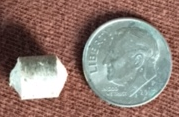
Carbon Analytic is a research effort engaged in waste, climate and the need for clean, renewable energy. This page describes the results of a novel solid fuel source to offset the insufficiency of wind and solar to meet demand. Our design is portable, renewable and 24/7 reliable.
The global community has grown complacent toward solutions after years of debate because there hasn't really been a global solution to address the need for combined, renewable, sustainable process until now.
The goal:
The goals emerged when we formed an engineering group to look at novel energy production as a refinement process for combustion. Combustion is the single most valuable form of energy conversion on demand, 24/7 regardless of location, weather or other instabilities.
We soon realized there is a distinct relationship between waste, energy production and long term climate impact. Current global trends are shifting to electric vehicles and are already impacting the ability of power plant production to keep pace. Worse, the centralized nature of power plant demand is yet another severe weak link in this chain risking growing power outages and infrastructure failures.
This set us on a path to utilize first-use disposable waste in refinement with other sustainable fuel sources, leaving 70% of fossil fuel demand in the ground. This has the potential to solve far more than the majority of both single use waste and fossil fuel depletion, both. Since fossil fuels and land fill waste are tied to methane release and CO2 impacting climate change, we needed to solve this as a matter of refinement, similar to how fossil fuels are refined to increase efficiency and reduce emissions.
The refinements produced the image above as the first sampled product tested having proven a 12.5% increase in energy density from the raw materials and several valuable secondary product streams to come from refinement production.
Processing techniques were then developed to alter the raw form of combusted gases to reach complete combustion to drive turbine power but also store the heat produced for additional conversion. At the same time development emerged to increase atmospheric oxygen in trade for reducing atmospheric nitrogen, to increase combustion efficiency, solve for NO(x) emissions and capture of CO2 back to pure carbon. The solid carbon residual is sequestered and used for reducing pesticide contamination in irrigation and addressing topsoil losses from decades of unsustainable farming.
In every instance, we sought to combine multiple harmful exposures to single solutions working to make silver linings out of the clouds our global population increase requires for a cleaner future.
Maximizing these processes requires we continue forward in the prototype efforts to complete the high volume industrial methods we're convinced can be used to power individual homes all the way up scale to converting coal or gas fired power facilities to utilize the developments globally.





